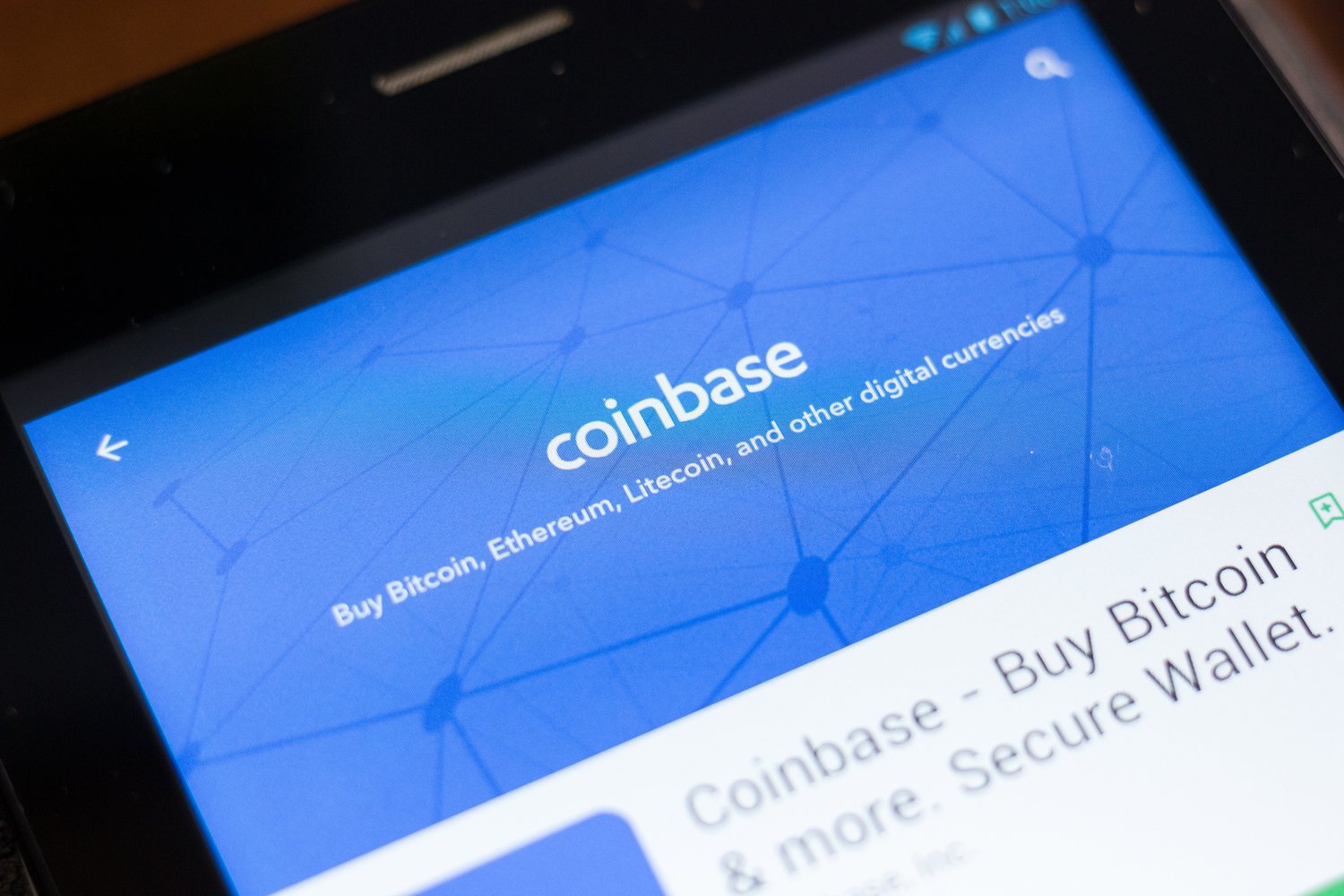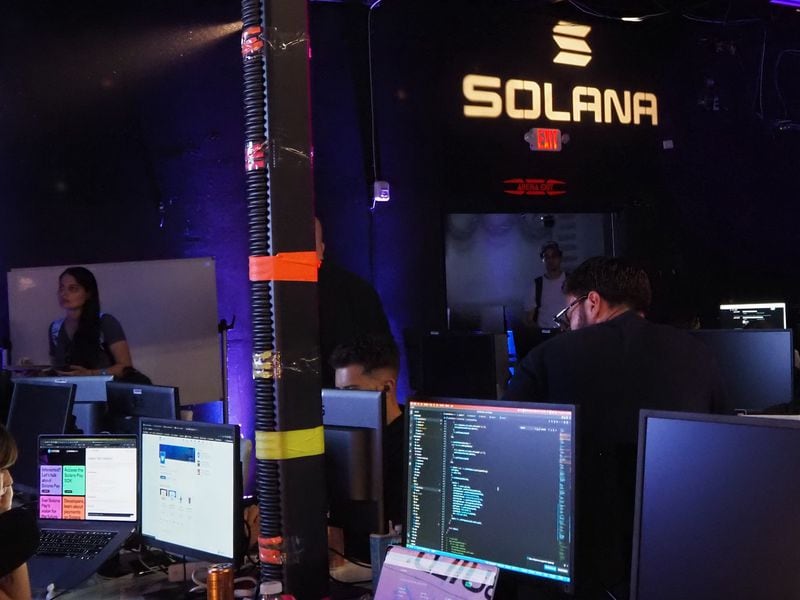All of a Sudden, It’s All About Bitcoin
Everybody’s talking about the surge in the bitcoin (BTC) price as anticipation heats up over new spot ETFs. But there’s a lot of activity happening in Bitcoin tech development – with innovations that might help the original and oldest blockchain to catch up with the boom of projects building in the Ethereum ecosystem. In this week’s Network News, we dive into the significance of Lightning Labs’ release of “Taproot Assets.”
For our feature this week, our Margaux Nijkerk brings a colorful profile of an Ethereum Foundation security researcher who spends his time (sometimes working out of an Airstream parked in the mountains) scouring the Ethereum blockchain for any vulnerabilities – including a technique known as “fuzzing.”
You’re reading The Protocol, CoinDesk’s weekly newsletter that explores the tech behind crypto, one block at a time. Subscribe here to get it every week.
Network news
:format(jpg)/cloudfront-us-east-1.images.arcpublishing.com/coindesk/5SSFQACM45DGVL3RP7V5F23S4A.png)
Schematic of a “replacement cycling attack” on Bitcoin’s Lightning Network. (Mononaut)
BITCOIN BLOSSOMS: It’s not just bitcoin’s price that’s suddenly exploding – thanks to speculation that U.S. regulators might approve new exchange-traded funds or ETFs allowing traditional investors to ape in. There’s also an upsurge in new products and technologies claiming to enhance the oldest and largest blockchain. Just two weeks ago, The Protocol covered the details of Robin Linus’s research paper on “BitVM,” proposing a way of incorporating smart contracts onto Bitcoin. The development offered yet another manifestation of Bitcoin getting Ethereum-style features that many members of the community had previously resisted – recalling the explosion earlier this year of “Bitcoin NFTs” via the Ordinals protocol. Now there’s another: Taproot Assets, a project from the developer Lightning Labs that would enable the issuance of stablecoins and other digital assets on Bitcoin and the layer-2 Lightning Network. “This release marks the dawn of a new era for Bitcoin,” Ryan Gentry, director of development at Lightning Labs, wrote in a blog post last week, while quickly adding that the project “upholds Bitcoin’s core values.” On the question of whether Taproot Assets might cause congestion on Bitcoin similar to what happened after Ordinals debuted, Gentry told CoinDesk it isn’t likely. ”The protocol only requires an issuer to make a single bitcoin transaction to mint an effectively unbounded amount of Taproot Assets, and all of the metadata describing those assets is stored off-chain, with only a cryptographic commitment to the assets stored on-chain,” Gentry wrote in a direct message. “Further, transacting with Taproot Assets over the Lightning Network will happen off-chain and will not touch the blockchain at all.” The crypto analysis firm Messari summed it all up in a report on Wednesday: “Developers have embraced the network’s inherent constraints and learned to innovate on top of the base layer.”
RISK MITIGATION: Bitcoin developer Antoine Riard’s warning over “replacement cycling attacks” on the Lightning Network has drawn buzz and yuks on social media, as experts rushed to explain the extent of the risk and offered suggestions for a fix. The gist of it is that these attacks rely on a deep understanding of the arcana of “hashed time locked contracts,” or HTLCs, which are a type of conditional payment used in Lightning Network payment channels. According to the Bitcoin Optech newsletter on Wednesday: “Since the disclosure, implementations have been updated to include mitigations for the attack and we strongly recommend upgrading to the latest version of your preferred LN software.” Those include more frequent rebroadcasting of transactions, though such steps aren’t likely to bridge the gap. Bitcoin Optech noted that, since Riard’s disclosure of the vulnerability, more than 40 separate posts have been made to developer mailing lists offering “proposed additional mitigations.”
The Aptos blockchain suffered its first major transaction delay, lasting five-plus hours and attributed to “a non-determinism” introduced by a code change in August that only became apparent last week.
In the wake of Lido Finance’s decision to discontinue new requests for staking Solana’s SOL token, there’s a new community proposal to also sunset on Polygon, claiming some $3.4 million has been invested in the initiative to get only $166,683 a year in fees: “This ROI is a sheer waste,” the author wrote.
Crypto wallet maker Ledger officially rolls out “Recover,”’ unleashing fresh round of snark.
The World Bank, led by former Citigroup executive Ajay Banga, issued a 100 million-euro “blockchain bond” on a distributed-ledger platform developed by Euroclear.
PetroChina completed its first international crude oil trade settled in digital yuan (e-CNY), part of the Shanghai Petroleum and Natural Gas Exchange’s efforts to address the Shanghai municipal government’s requirements to use the digital currency in cross-border trade, China Daily reported.
U.S. Treasury seeks to name crypto mixers as “money laundering concern.”
Crypto fan Tom Emmer gets nod as Republican nominee for speaker of the U.S. House of Representatives, then quickly gives up under opposition pressure within his party.
In Argentina’s presidential election, pro-Bitcoin (and self-described anarcho-capitalist) Javier Milei heads to run-off election against Sergio Massa, the current finance minister.
Protocol Village
Highlighting blockchain tech upgrades and developments.
1. DYdX, decentralized crypto exchange, open-sources “V4” code, initiating countdown toward upcoming Cosmos chain.
2. Polygon, the Ethereum scaling solution, released a proposal to create a “Polygon Protocol Council” in a push toward a more decentralized governance style, and named 13 inaugural members including officials from Coinbase and the Ethereum Foundation.
4. Lightspark, the Lightning Network-focused payments protocol led by David Marcus, creator of Facebook owner Meta’s since-abandoned to launch the Libra (later renamed Diem) stablecoin, announced the open-source Universal Money Address (UMA) standard, according to a blog post.
5. The Index Coop, a DAO focused on on-chain structured products, launched a new “Index Coop CoinDesk ETH Trend Index (cdETI), a tokenized implementation of CoinDesk Indices’ Ether Trend Indicator, which is “designed to take advantage of ETH’s price volatility, without the need for constant market monitoring and active trading,” according to a press release.
Money Center
-
Nocturne Labs, the company behind the privacy on-chain accounts protocol Nocturne, announced Wednesday it raised $6 million in a seed funding round. (Investors: Bain Capital Crypto, Polychain Capital, Ethereum co-founder Vitalik Buterin, Avail’s Anurag Arjun, Ethereum Foundation’s Tim Beiko, Bankless Ventures, HackVC and Robot Ventures.)
-
Web3 security firm Blockaid, used by firms like Metamask and Opensea, raises $27M to help tackle industry’s ‘never-ending’ challenges. (Ribbit Capital, Variant, Cyberstarts, Sequoia Capital, Greylock Partners.)
-
NASD, the company behind Noble, an asset issuance chain built for communication between blockchains, has raised $3.3 million in a seed round. (Polychain Capital, Borderless Capital, Circle Ventures, Wintermute Ventures.)
-
Crypto venture firms have committed more than $300 million to privacy technology maker Nym Technologies through its Innovation Fund, developers shared with CoinDesk. The fund will provide capital to crypto builders, developers and communities with a focus on privacy, which aims to prioritize users’ anonymity during financial activities. It has received commitments from investors such as Polychain, KR1, Huobi Incubator and Eden Block.
-
OpenAI founder Sam Altman’s Worldcoin (WLD) project will switch operator rewards from USDC stablecoins to its WLD tokens on October 24, increasing the tokens’ circulating supply in the open market. “The majority of the WLD token supply will be given to new and existing users in the form of user grants over the years to come,” Worldcoin said in a post.
-
EGLD token rallies on partnership With Google Cloud.
Data Corner
CoinDesk’s Shaurya Malwa wrote an interesting story this week about a spike in Ethereum fees as a result of a frenzy of activity from traders trying to get their transactions included on the blockchain – as crypto markets heat up. But as the chart below shows, average daily fees remain quite low by historical standards, ostensibly due to the pall of crypto winter, which has curbed demand for blockspace; there’s little congestion. The fee levels are just a 10th of what they were at this year’s muted peak, reached in May.
:format(jpg)/cloudfront-us-east-1.images.arcpublishing.com/coindesk/BOM47YTEDFADLENCMOKNCOPAIA.png)
Calendar
Edited by Bradley Keoun.









